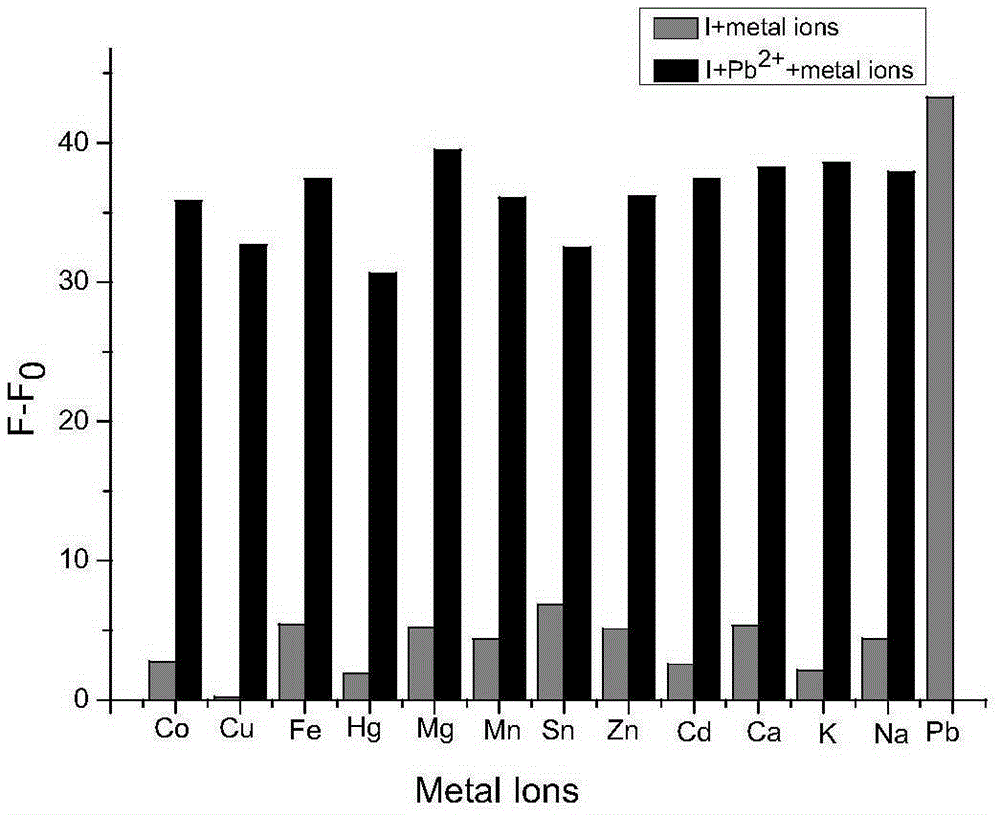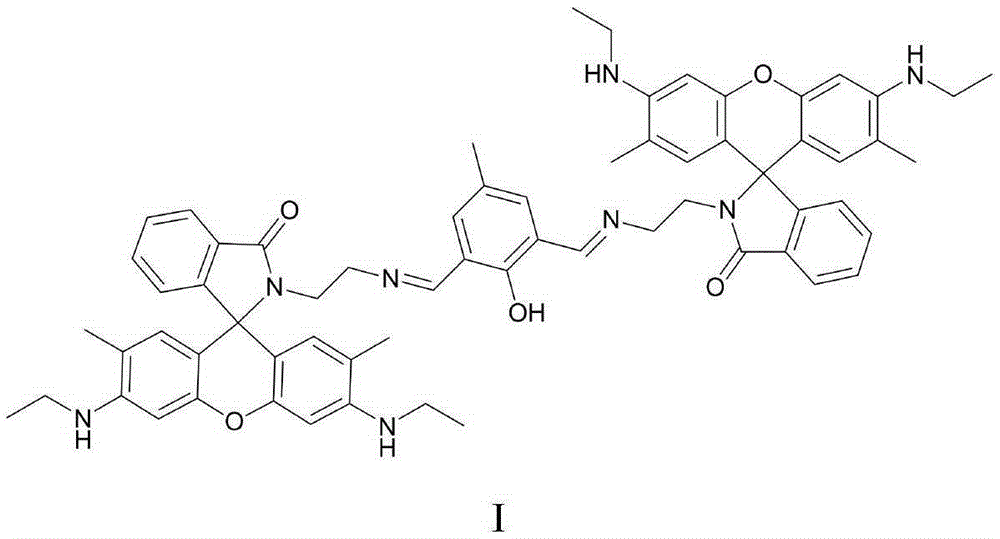Fluorescent probe for detecting lead ion and preparation method thereof
A technology of fluorescent probes and lead ions, applied in fluorescence/phosphorescence, chemical instruments and methods, luminescent materials, etc., can solve the problems of few literature reports on lead ions, and achieve high yield and good photostability
- Summary
- Abstract
- Description
- Claims
- Application Information
AI Technical Summary
Problems solved by technology
Method used
Image
Examples
Embodiment 1
[0014] Embodiment 1: the synthetic route of fluorescent probe
[0015] 1) Synthesis of 2,6-diformyl-4-methylphenol
[0016]
[0017] Add 6.0g of 2-hydroxy-5-methyl-1,3-benzenedimethanol (35.7mmol) and 46.6g of MnO to a 250mL three-necked flask 2 (535.5mmol), 150mL of 1,4-dioxane, stirred and heated to 100°C, stirred and reacted for 18h. The reaction was tracked by thin-layer chromatography, and the reaction was stopped after the raw material point disappeared. Filter with a sand core funnel, and the filtrate is separated by column chromatography (eluent, petroleum ether: ethyl acetate = 15:1) to obtain 2,6-diformyl-4-methylphenol.
[0018] 1 HNMR (400MHz, CDCl 3 )δ / ppm: 11.45(s,1H), 10.21(s,2H), 7.77(s,2H), 2.39(s,3H).
[0019] 2) Synthesis of rhodamine 6G fluorescent probes
[0020]
[0021] Add 0.55g of rhodamine 6G ethylenediamine derivative (1.2mmol) and 0.10g of 2,6-diformyl-4-methylphenol (0.6mmol) into a 100mL three-necked flask, add 30mL of ethanol, stir an...
Embodiment 2
[0027] Embodiment 2: the application of fluorescent probe in lead ion detection
[0028] Preparation of the fluorescent probe solution: Accurately take 52 mg of the fluorescent probe, dissolve it with acetonitrile and deionized water (1:1 by volume), transfer it to a volumetric flask of 500 mL, and prepare a concentration of 1.0×10 -4 Fluorescent probe stock solution (stored at 4°C, protected from light), diluted to the required concentration before use.
PUM
 Login to View More
Login to View More Abstract
Description
Claims
Application Information
 Login to View More
Login to View More - R&D Engineer
- R&D Manager
- IP Professional
- Industry Leading Data Capabilities
- Powerful AI technology
- Patent DNA Extraction
Browse by: Latest US Patents, China's latest patents, Technical Efficacy Thesaurus, Application Domain, Technology Topic, Popular Technical Reports.
© 2024 PatSnap. All rights reserved.Legal|Privacy policy|Modern Slavery Act Transparency Statement|Sitemap|About US| Contact US: help@patsnap.com










